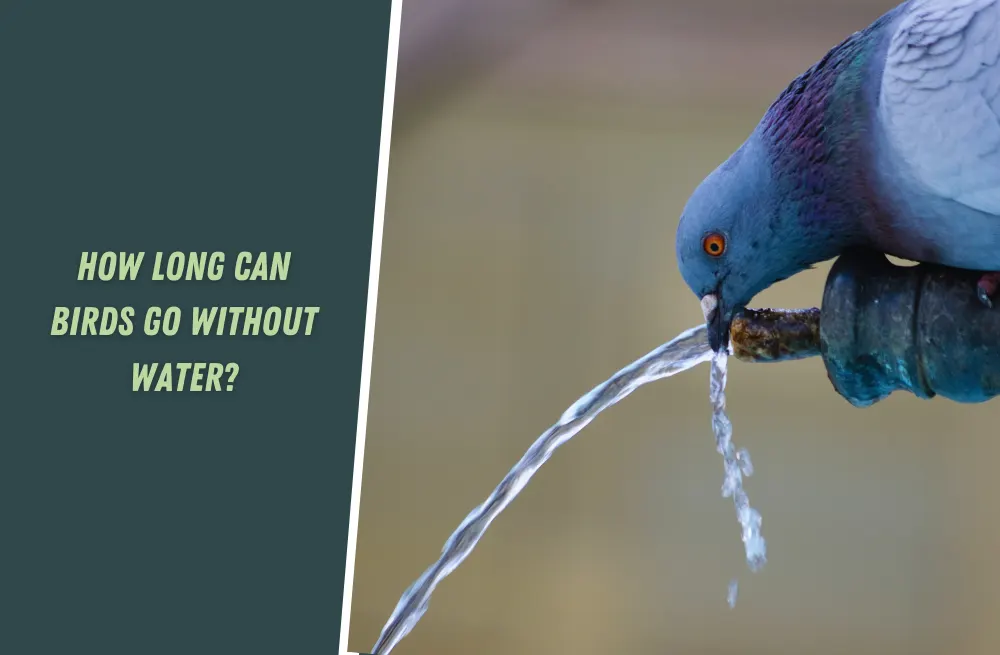Kangaroos are no strangers to hot weather conditions. In fact, they have evolved unique biological strategies to survive in the scorching heat of the Australian outback. Red kangaroos, the largest species of kangaroo, have a particularly interesting way of keeping cool.
During the hottest parts of the day, these roos stay close to the ground to avoid predators and reduce their metabolic rate by up to 75%. This allows them to conserve energy and beat the heat at the same time.
According to Dawson et al., red kangaroos can also increase their body temperature slightly during periods of extreme heat, which helps them retain water and prevent dehydration.
Foreleg Licking Cools Skin: How Kangaroos Keep Cool
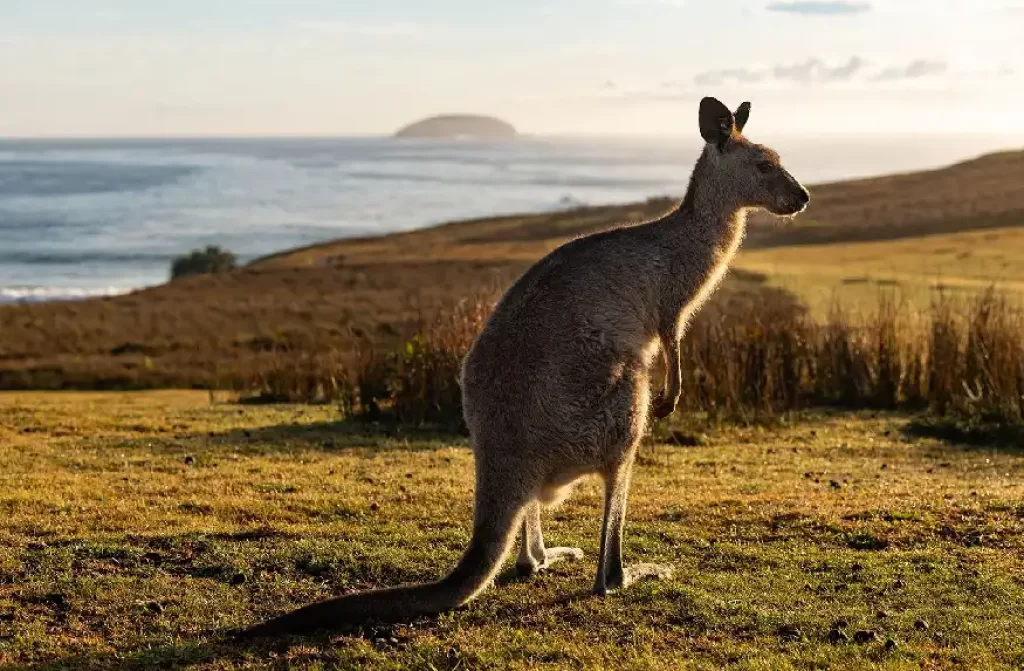
Kangaroos are known for their unique adaptations to the harsh Australian climate. These marsupials have developed several ways to keep cool in hot weather, one of which is licking their forelegs. In this section, we will explore how kangaroos use this behavior to regulate their body temperature.
Kangaroos Lick Their Forelegs to Cool Down
kangaroos have a few tricks up their sleeves. One of the most interesting behaviors they exhibit is licking their forelegs. This action helps moisten the skin and reduce body temperature by promoting evaporative cooling.
Licking Moistens Skin and Reduces Body Temperature
The saliva on a kangaroo’s forelegs provides a thin layer of moisture that cools the skin as it evaporates. This process is similar to sweating in humans, but instead of sweat glands, kangaroos rely on saliva glands located in their mouths.
By licking themselves, kangaroos can also remove dirt and debris from their fur that might trap heat against their skin. This grooming behavior not only keeps them clean but also helps them stay cool during hot weather.
Saliva Evaporation Provides Cooling Effect
As mentioned earlier, the evaporation of saliva on a kangaroo’s forelegs provides a cooling effect that helps regulate body temperature. The moistened skin allows for more efficient heat dissipation through radiation and convection.
Interestingly enough, kangaroos do not use their hind legs to cool themselves down despite popular belief. Instead, they rely on other methods such as panting and seeking shade when temperatures get too high.
Water-Repellent Fur: Hourglass-Shaped Molecules and Rapid Oscillation
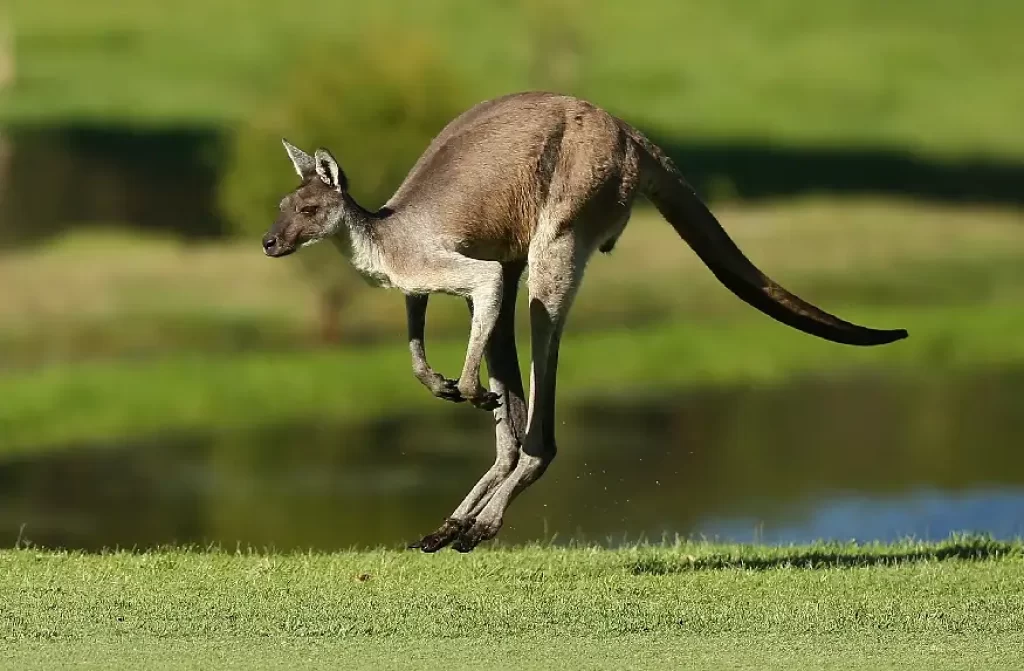
Kangaroos are fascinating creatures that have adapted to survive in the harsh Australian climate. One of the ways they do this is by staying cool in hot weather, which is essential for their survival. Their water-repellent fur plays a crucial role in keeping them dry and comfortable.
Hourglass-Shaped Molecules
The hourglass-shaped molecules in kangaroo fur are what make it water-repellent. These molecules are arranged in such a way that they prevent moisture from penetrating the surface of the fur. This means that when kangaroos sweat, the moisture stays on the surface of their fur, allowing it to evaporate quickly.
This mechanism is similar to how raindrops bead up on a waxed car or umbrella. The hourglass shape of the molecules creates a barrier that prevents water from seeping through, keeping kangaroos dry even during heavy rains.
Rapid Oscillation
In addition to their water-repellent fur, kangaroos also use rapid oscillation to stay cool in hot weather. When they hop around, air enters and exits their pouches at a high rate, creating a cooling effect throughout their body.
This mechanism is like how humans use fans or air conditioning to stay cool during hot weather. By creating airflow across their bodies, kangaroos can regulate their temperature and avoid overheating.
Group Cooling
Another interesting way that kangaroos stay cool is by gathering together in groups. When several animals come together, they create a network of bodies that provides shade and helps keep everyone cool.
This behavior is similar to how people gather under trees or umbrellas during hot weather. By sharing resources and working together, kangaroos can survive even during extreme heatwaves.
Ears as Cooling Mechanisms: Rabbits and Elephants
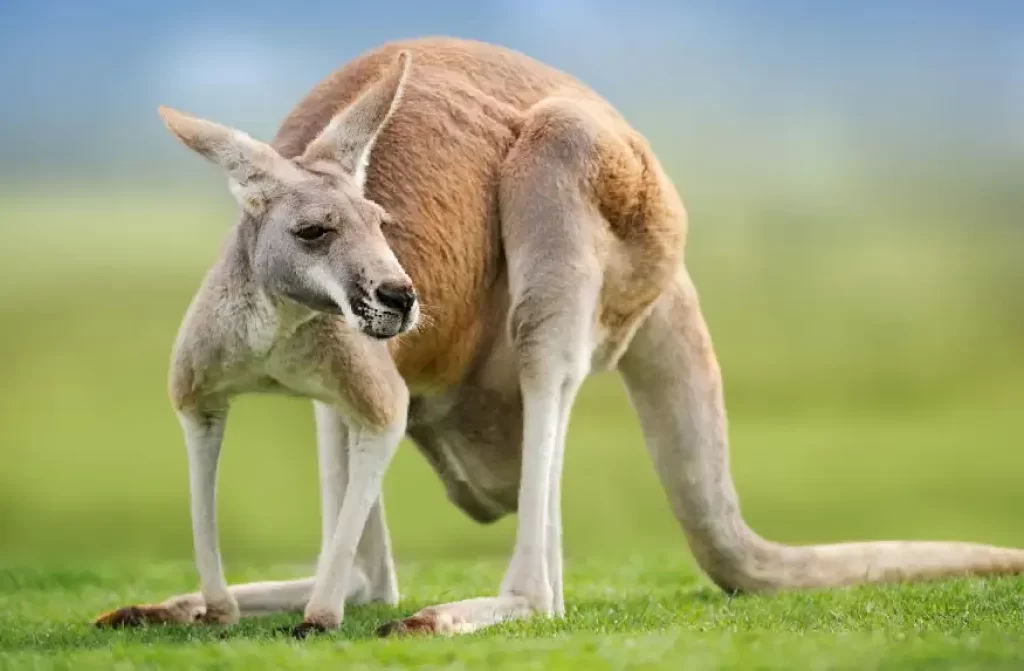
Ears are not just for hearing, they also play a crucial role in regulating body temperature in many mammals, including kangaroos. In fact, rabbits and elephants also use their ears to cool themselves down during hot weather.
Blood Vessels and Veins in the Ears
The blood vessels and veins in the ears of these animals help dissipate heat and cool the body. When it’s hot outside, these blood vessels dilate or enlarge, allowing more blood to flow through them. As the blood circulates through the ears, it is cooled by the surrounding air before returning to the rest of the body. This helps lower their overall body temperature.
Other Cooling Mechanisms
While kangaroos, rabbits, and elephants rely on their ears to stay cool, there are other animals that use different cooling mechanisms. For example:
- Giraffes have long necks that allow them to reach high into trees for food while avoiding direct sunlight.
- Horses sweat profusely to cool themselves down.
- Pigs wallow in mud to keep their skin moist and cool.
These animals have adapted unique ways of staying cool based on their environment and physiology.
Fur as Insulation: Thinner Fur Keeps Numbats Warm, Camel’s Fur Coat Keeps it Cool
Fur is an important feature for animals to regulate their body temperature. Different types of fur serve different purposes in different weather conditions. For example, thinner fur helps numbats stay warm in cold weather while thicker fur helps animals like Rufus bettong keep themselves warm during winters.
Camels are known for their ability to survive extreme heat and harsh desert conditions. Their fur coat plays a vital role in keeping them cool. The thick and shaggy hair on their back provides insulation by trapping air close to the skin, which prevents heat from penetrating the body. Their hair reflects sunlight, further reducing the amount of heat absorbed by the animal.
Another interesting animal with unique skin features is the Thorny devil lizard. Its skin is covered with spiky scales that help it stay cool in hot weather. These scales are designed to collect water droplets from dew or rainfall and channel it towards its mouth through capillary action.
Needham’s skink has a unique ability to change the color of its skin to regulate body temperature. When exposed to sunlight, they darken their skin color which increases absorption of solar radiation and raises their body temperature. On the other hand, when they need to cool down, they lighten their skin color which reduces absorption of solar radiation and allows them to lose heat more easily.
Thermoregulation by Kangaroos from Mesic and Arid Habitats: Protecting from Temperature Extremes
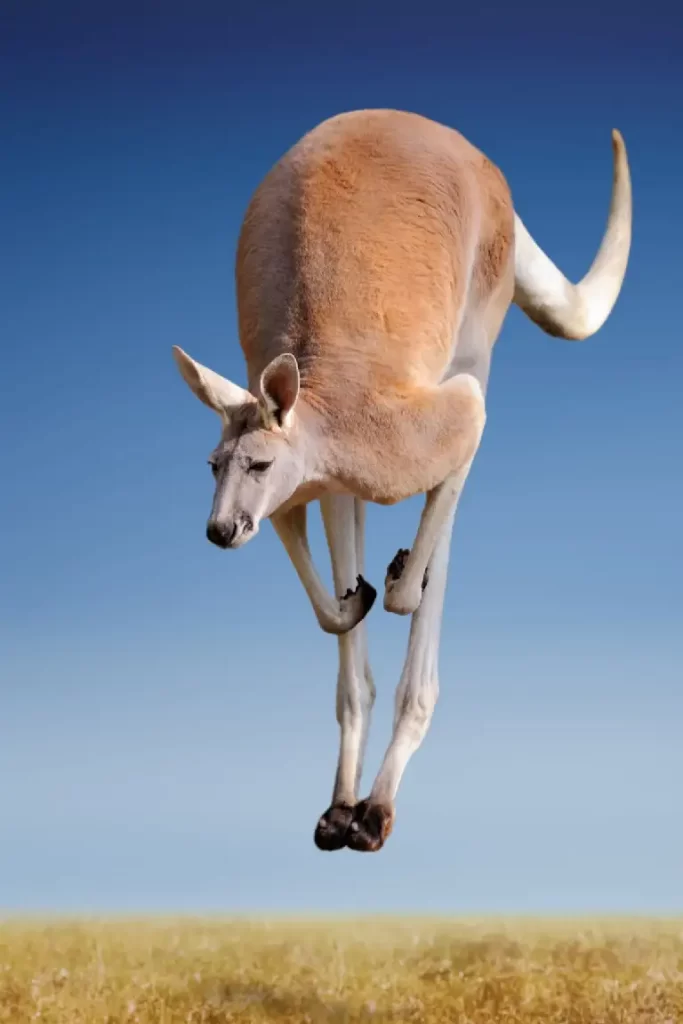
Kangaroos are fascinating animals that have evolved to survive in extreme temperatures, whether it’s the cold of the outback or the scorching heat of the desert. Their living systems are designed to protect them from temperature extremes, which can be a threat to their survival. In this article, we will explore how kangaroos thermoregulate themselves in order to maintain homeostasis.
Panting and Sweating
One of the ways that kangaroos regulate their body temperature is through panting and sweating. When they become too hot, they pant rapidly in order to evaporate moisture from their lungs, which helps cool them down. Kangaroos sweat through glands on their forearms and legs. This sweat evaporates quickly due to the dry climate in which they live, further helping to cool them down.
Adaptations for Cold Environments
In addition to protecting themselves from high temperatures, kangaroos also have adaptations that help them survive in cold environments. For example, some species of kangaroo have thick fur that helps insulate them against the cold. They also huddle together for warmth when it’s particularly chilly outside.
Behavioral Adaptations
Kangaroos also exhibit behavioral adaptations that help them regulate their body temperature. For example, during hot weather, they will rest in shady areas during the day and become active at night when it’s cooler outside. They may also dig shallow holes in the ground where they can rest and escape the heat.
Differences Between Mesic and Arid Habitats
Kangaroos living in mesic habitats (areas with moderate rainfall) tend to have different thermoregulation strategies than those living in arid habitats (areas with little rainfall). In mesic habitats, where temperatures are generally lower than in arid habitats, kangaroos may not need to pant or sweat as much. Instead, they may simply seek out shady areas or rest in burrows during the hottest parts of the day.
In arid habitats, where temperatures can reach upwards of 100 degrees Fahrenheit, kangaroos must be especially vigilant about regulating their body temperature. They may spend more time resting during the day and become active at night when it’s cooler outside. They may lick their forearms and legs to help cool themselves down through evaporative cooling.
7 Strange Ways Animals Beat the Heat
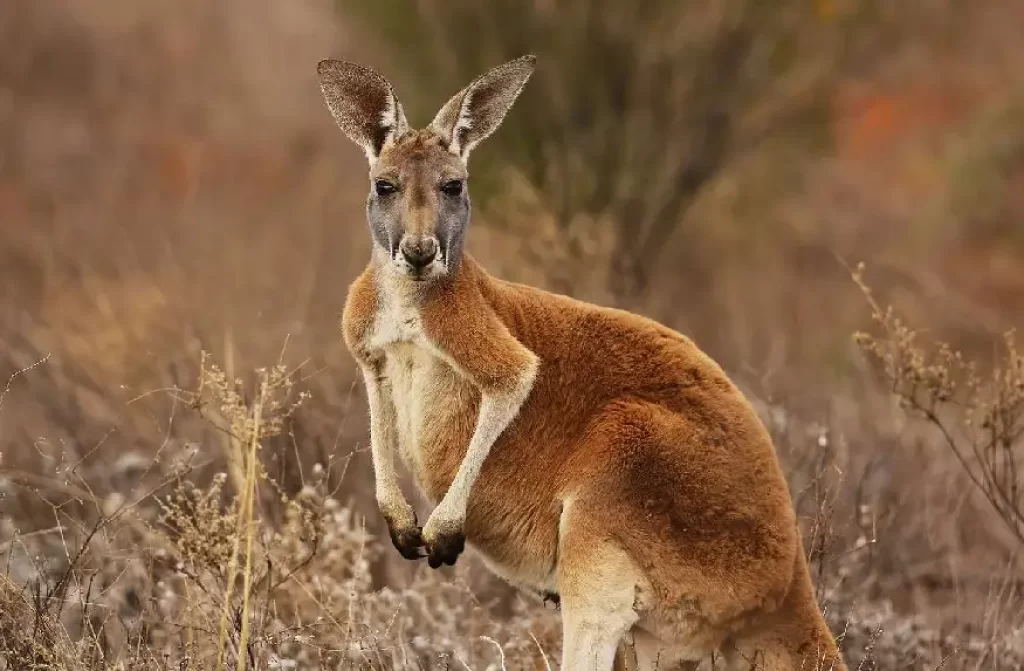
When temperatures rise, humans have a variety of ways to keep cool – from drinking cold beverages to taking a dip in the pool. But what about animals? How do they manage to stay comfortable in the heat? Here are seven strange ways that animals beat the heat:
Dogs Cool Themselves by Panting and Sweating Through Their Paw Pads
Dogs don’t sweat like humans do, but they do have sweat glands on their paw pads. However, this isn’t their primary method of cooling off. Instead, dogs rely on panting to regulate their body temperature. When a dog pants, moisture evaporates from their tongue and mouth, which helps them dissipate heat.
Zebras’ Black and White Stripes Help Them Regulate Their Body Temperature in the Hot Sun
Zebras may look like they’re wearing fancy outfits, but those stripes serve an important purpose: regulating body temperature. The black stripes absorb more heat than the white ones, creating small pockets of air that help cool down the zebra’s skin.
Elephants Use Their Large Ears to Dissipate Heat Through Evaporative Heat Loss Mechanisms
Elephants may be massive creatures, but they’re also incredibly efficient at keeping cool. One way they do this is through evaporative heat loss mechanisms – basically, using water or other fluids to cool down their bodies. Elephants also have large ears that act as radiators; when blood flows through these ears and is exposed to air, it cools down before returning to the rest of the body.
Kangaroos Lick Their Forearms
Kangaroos may not be able to sweat like humans or pant like dogs, but they’ve got another trick up their sleeves (or rather, forearms). When kangaroos lick their forearms – which are hairless and contain many blood vessels close to the surface – the saliva evaporates and cools down their skin.
Hippos Excrete a Red Liquid That Acts as Sunscreen
Hippos may look tough, but they’re actually quite sensitive to the sun’s rays. To protect themselves from sunburn and overheating, hippos excrete a red liquid from their skin that acts as a natural sunscreen. This substance also has antibacterial properties, which helps keep the hippo’s skin healthy.
Birds Use Their Beaks to Release Heat
Birds don’t have sweat glands like humans or dogs, but they do have an effective way of releasing heat: by panting and using their beaks as radiators. When birds open their beaks wide and breathe rapidly, air flows over their tongue and mouth, cooling down the blood vessels in those areas. This cooled blood then circulates throughout the bird’s body, helping it regulate its temperature.
Polar Bears Have Black Skin Underneath Their White Fur
Polar bears may live in one of the coldest environments on Earth, but that doesn’t mean they never get too hot. To help them stay cool when temperatures rise above freezing, polar bears have black skin underneath their white fur. This allows them to absorb more sunlight than if they had white skin, which helps them warm up when it’s cold out – but also means they can release heat more efficiently when it’s hot.
You might also like
- What do Kangaroos Look like When They are Born?
- Human vs Kangaroo: Who Wins the Ultimate Fight?
- How Many Kangaroos are there in Australia?
- What do Kangaroos Eat in the Desert?
- Can Kangaroos Move Their Legs Independently?
- Kangaroos Can’t Walk Backwards: Myth or Fact?
Adapting to Hot Weather – How Kangaroos Survive
Kangaroos are remarkable animals that have adapted to survive in the hot and dry Australian climate. They have developed several ways to keep themselves cool, which include foreleg licking, water-repellent fur, and ears as cooling mechanisms.
Foreleg licking is one of the most effective ways for kangaroos to cool themselves down. By licking their forelegs, they spread saliva on their skin, which evaporates and cools them down. This process is similar to sweating in humans.
Another way kangaroos keep cool is through their water-repellent fur. The hourglass-shaped molecules in their fur repel water and prevent it from reaching their skin. Rapid oscillation of the fur helps dissipate heat from their bodies.
Kangaroos also use their ears as cooling mechanisms, much like rabbits and elephants do. They have a rich blood supply in their ears, which helps regulate body temperature by releasing heat.
Fur also plays a role in thermoregulation for kangaroos living in mesic and arid habitats. Thinner fur keeps numbats warm during cold nights while camel’s fur coat keeps it cool during hot days.
In conclusion, kangaroos have evolved unique adaptations that enable them to survive extreme temperatures in Australia’s harsh environment. By using various methods such as foreleg licking, water-repellent fur, and ear cooling mechanisms, they can maintain a stable body temperature despite changing environmental conditions.
If you’re interested in learning more about how animals adapt to different environments or want to see other strange ways animals beat the heat, check out “7 Strange Ways Animals Beat the Heat.






